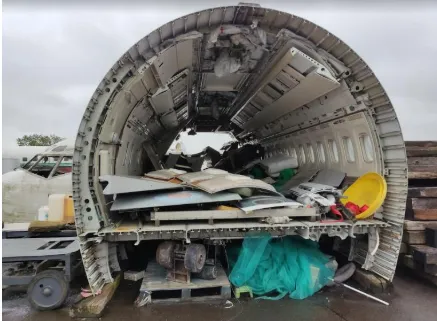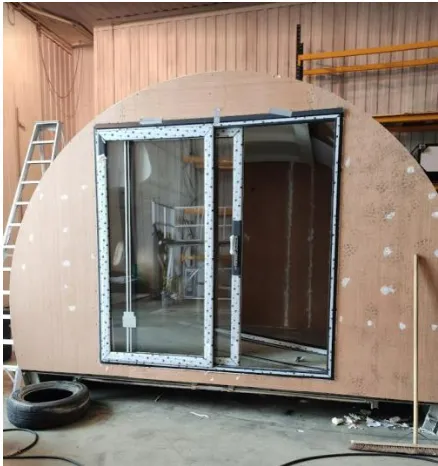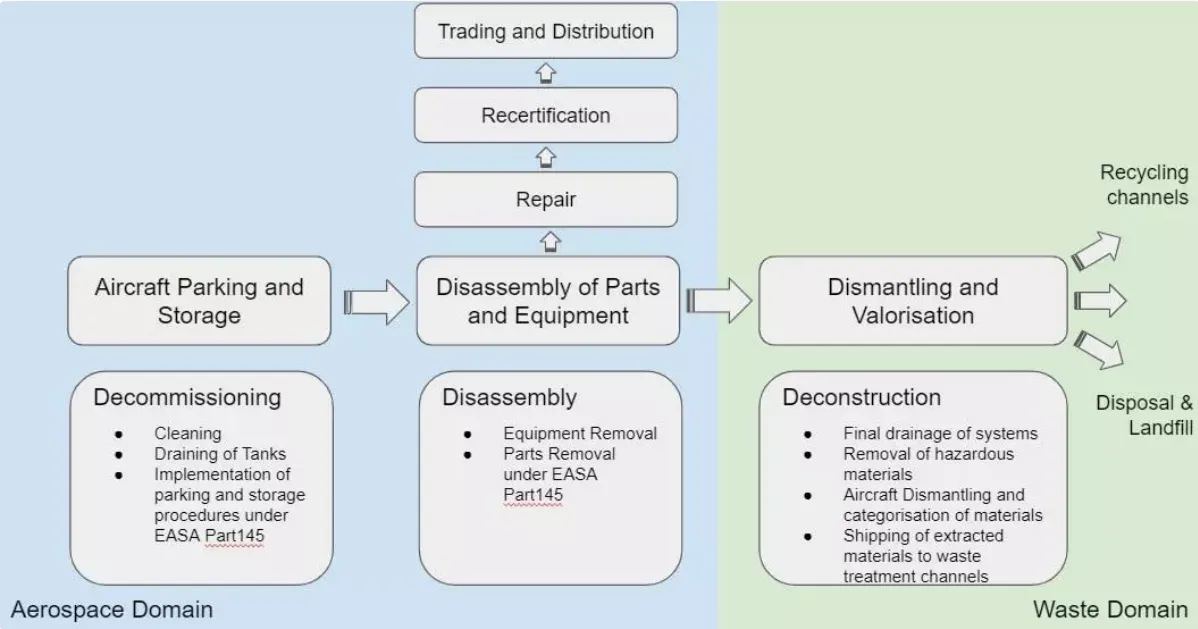DALLAS — As the world looks to sustainable aviation, the focus is turning to aircraft's end of life: retirement and recycling. Decommissioning no longer means scrapping aircraft; it means recycling them as assets.
Over 650 commercial aircraft retire annually, and up to 90% of a new-generation jet can be recycled, reused, or reemployed. The industry's evolving strategy merges environmental responsibility with economic sense and proves that sustainable aviation has far more reach than the runway.
How Do Jets Retire?
Jets generally exit service due to age, safety concerns, or cost inefficiency. Commercial jets typically last 25-30 years, while freighters can last 40 years. Carriers generally retire older models when the cost of maintenance and the value of the fuel burn exceed their residual value.
Fleet renewal, replacing older models like the Boeing 757 or Airbus A340 with new-age A321neos and 787s, is as much an environmental choice as an economic choice.
The global aircraft retirement rate is set to reach 1100 jets in 2038, driven by aging fleets and rising sustainability aspirations. In tandem with that rise, how aircraft are disposed of at the end of service has emerged as a challenge to the environmental integrity of the aviation industry.
Inside the Recycling Process
Modern aircraft recycling is a highly detailed, multi-stage process carried out by qualified facilities in accordance with the Aircraft Fleet Recycling Association (AFRA) protocol. It begins with the aircraft being deregistered and flown to areas with a dry climate, such as Teruel, Spain, or the Mojave Desert in Arizona.
Fluids onboard, hazardous items, and components are removed and tested for correct operation. During disassembly, interiors, landing gear, avionics, and engines are stripped by experts to recover high-value parts for salvage. The next step, dismantling, involves breaking the airframe into sections and stripping the metals to prepare them for recycling. Aluminum, titanium, and steel are treated and prepared again to optimize their use in the industry.

Environmental Benefits of Recycling
Valuable metals and parts are recovered for reuse. This recovery saves waste and prevents pollution. AFRA President Brent Webb explains how this disassembly process prevents environmental pollution from fluids. "Aviation recycling helps reduce the demand for new raw materials and minimize the environmental harm of mining and manufacturing," he states.
A single narrow-body jet holds more than 70 tons of aluminum, which requires significant energy to manufacture but can be recycled repeatedly. Recycling these reduces greenhouse gas emissions by up to 90% compared to producing them from raw materials. In 2023, ecube recycled 48,521 pieces back into active fleets and reused more than 110 tons of material, with a further 1,600 tons recycled.
Such initiatives align with international sustainability objectives, most notably the aviation industry's net-zero 2050 mission, where reducing waste supports emissions reductions.
The Economic Case for Circularity
Sustainability in aircraft recycling isn't just ecological; it's profitable, too. The Used Serviceable Material (USM) market, worth more than USD US$14 billion by 2032, is an example of how circularity yields profit. USM parts, such as engines, auxiliary power units (APUs), and landing gears, are refurbished, inspected, and certified for their next useful life in other aircraft. These parts cost airlines up to 40% less than new OEM parts, saving airlines a substantial amount on maintenance at the peak of supply chain disruption.
The main USM market drivers are reduced cost —cutting purchase costs by 30–40%; lower downtime —providing fast access to certified replacement parts; sustainability —reducing carbon emissions in producing new parts; and circular efficiency —keeping valuable materials in the aircraft economy. Webb notes that recycling also creates local employment opportunities in disassembly, sorting, and materials processing. "It feeds local economies while creating global sustainability networks," he concludes.
Upcycling and Reuse Beyond Aviation
Not all the aircraft parts go back into the air. Many find new lives in unlikely places. Paneling and fuselage pieces are given new life as office furniture, aviation-themed decor, or set pieces in movie studios. Panels of cockpit sections are used in maintenance instruction at some flight academies, while at other academies, parts are given to universities and museums.
When the parts cannot be recycled for function, they are upcycled to retain material value. Aerospace aluminum is recycled for industrial purposes, titanium is reclaimed from engine components, and tire rubber is reconditioned for energy recovery or ground materials. Even fire extinguisher fluids, oils, and gases are now safely recovered and reused.

Technological Innovation in Decommissioning
The aircraft recycling business is rapidly improving. More efficient methods are being adopted, such as Industry 4.0 technologies and robotics. The SUSTAINair project, funded by the EU, is, for instance, developing robots that sense and extract rivets to recover alloys from composite structures —an essential step toward next-generation materials.
Companies such as AerFin and GA Telesis have developed predictive algorithms that identify and locate components with good resale value while forecasting future USM demand. Analytics helps reduce wastage and optimize the recovery plans. Augmented and virtual reality technologies are now also entering the process, where technicians can visualize disassembly processes and enhance training precision.
Issues: Composite Structures, Regulation
The faster the pace of development in aircraft technology, the quicker the problems with recycling. The faster composite materials, such as carbon fiber, are replacing aluminum in aircraft, including the Airbus A350 and Boeing 787, making recycling more difficult because composites, unlike metals, cannot be remelted and recast.
Expert recycling businesses such as Plaswire are the way forward for reusing these complex polymers, reducing CO₂ emissions by 6 tons for every ton recycled. There is no unified method yet for handling end-of-life aircraft, unlike the car business, which EU directives have plagued.
Aircraft are now considered general waste under regulations that differ by material type. A gap industry association, such as AFRA, is helping to close by standardization and policy promotion.
Circular Design: Designing Airplanes for Disassembly
A genuinely circular air transportation system starts at the design stage. Eco-design, or "design for decommissioning," injects sustainability into the aircraft's conception. Companies such as Boeing and Airbus are already moving in that direction. The Airbus PAMELA project proved that up to 85% of an A300 can, in fact, be reused or recycled by Selective disassembly.
Likewise, Boeing's partnership with AFRA sets new ecologically responsible end-of-life management standards. Eco-design criteria emphasize modular design, source-traceable materials, and easy disassembly, so that aircraft in the future can be recycled rather than wasted.

The Wider Circular Aviation System
Circular aviation is no longer limited to recyclers and producers. Airlines, lessors, and MROs are including end-of-life reporting in their ESG plans. Air France (AF) and British Airways (BA), among others, have partnered with AFRA-approved plants to ensure transparent recycling procedures.
Avolon and ABL Aviation, as lessors, are synchronizing financial reporting with sustainability objectives, urging airlines to embrace greener teardown procedures. Used Serviceable Material (USM) is increasingly being sourced by MROs to comply with Airworthiness Directives (ADs) regulations while saving money and reducing emissions. The cooperation ensures that circularity is no longer an individual endeavor but a joint transformation of the entire aviation value chain.
A Second, Sustainable Life
The end of an aircraft's mission is no longer the end of its life. Through responsible recycling, reuse, and upcycling, aviation is capitalizing on waste as an opportunity. The value of circularity is that airlines can minimize resource use, reduce emissions, and enhance their commitment to environmental responsibility while also tapping economic efficiency.
The future of flight is not so much how airplanes travel efficiently in the sky, but how their materials are intelligently reincarnated back on Earth. The transition from linear to circular flight is not merely about sustainability, but also about resilience, innovation, and accountability to the generations yet to come.
.webp)


.webp)
